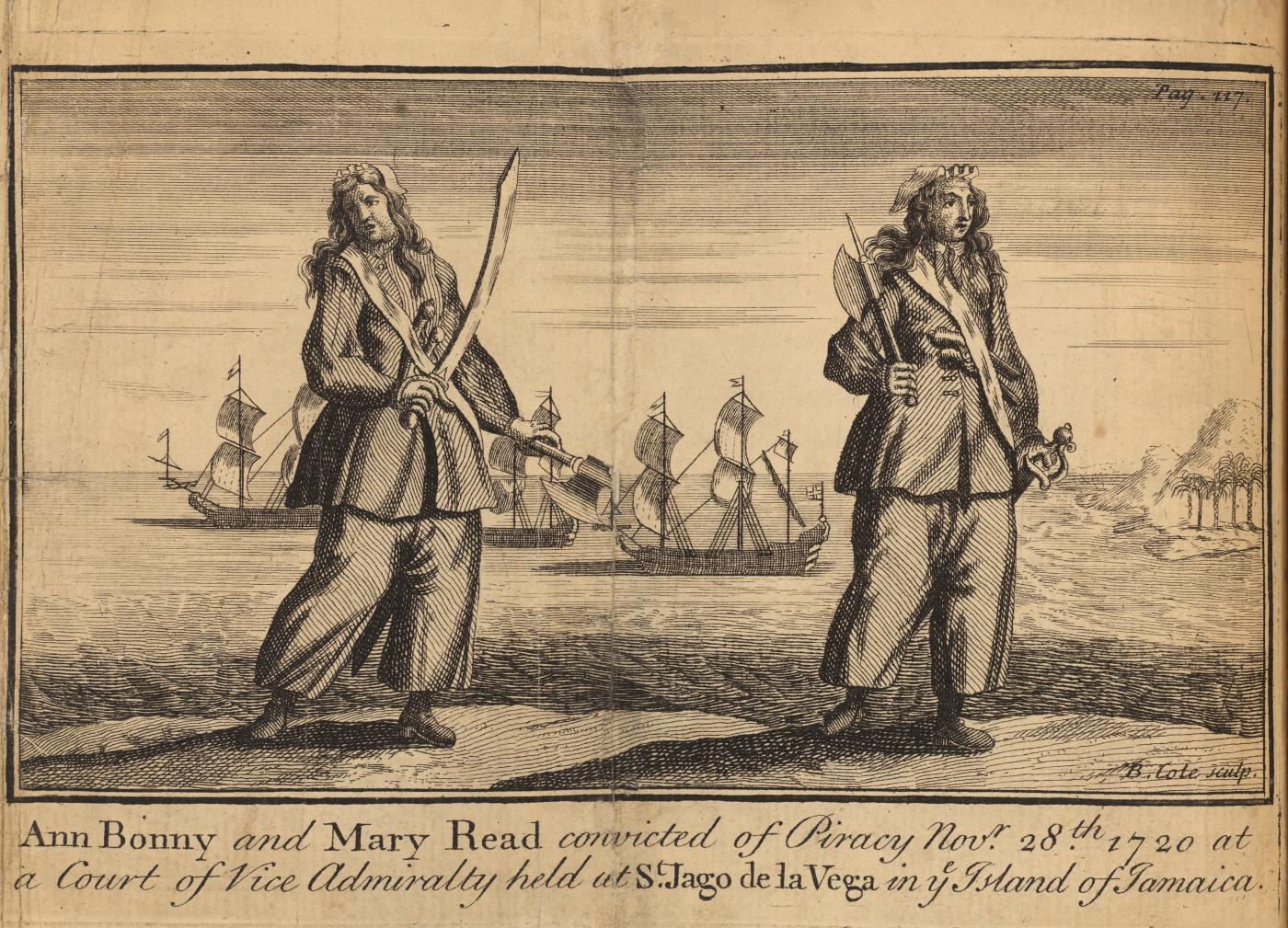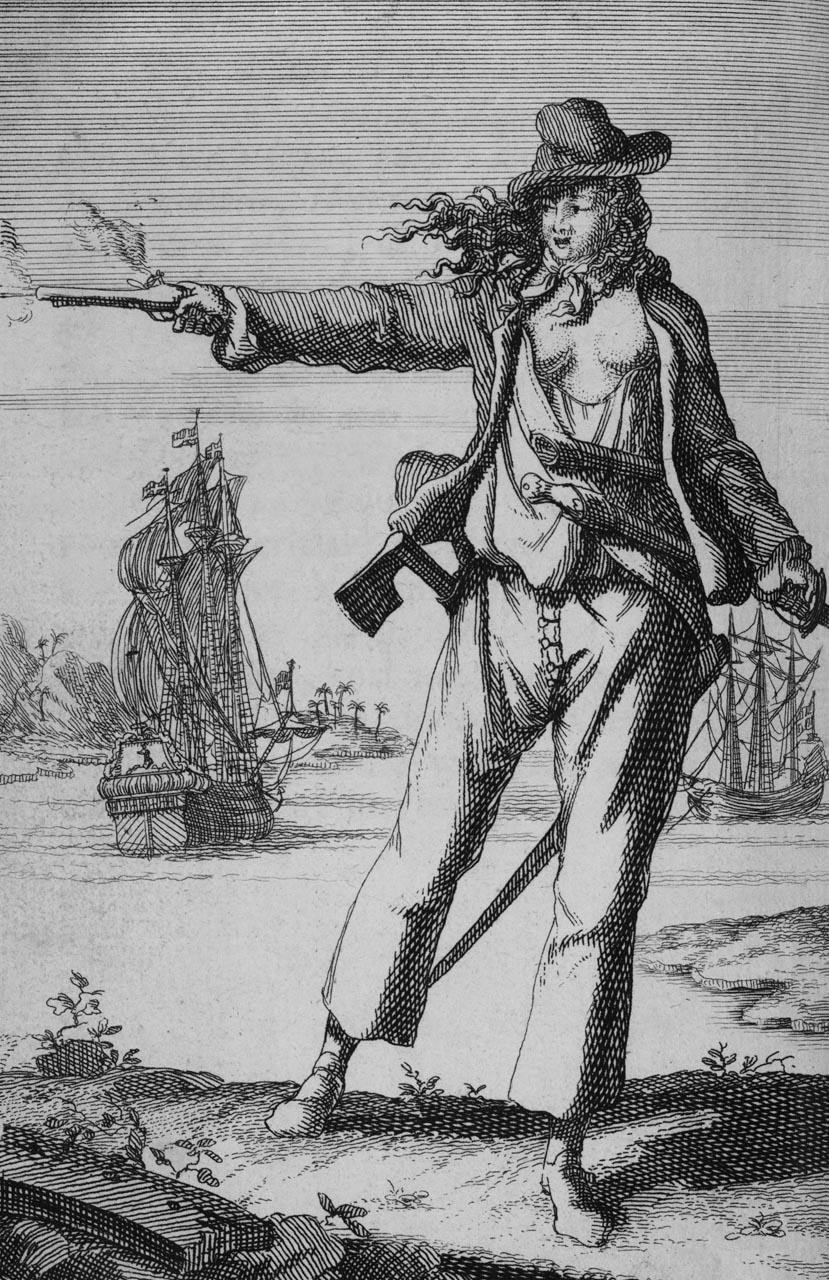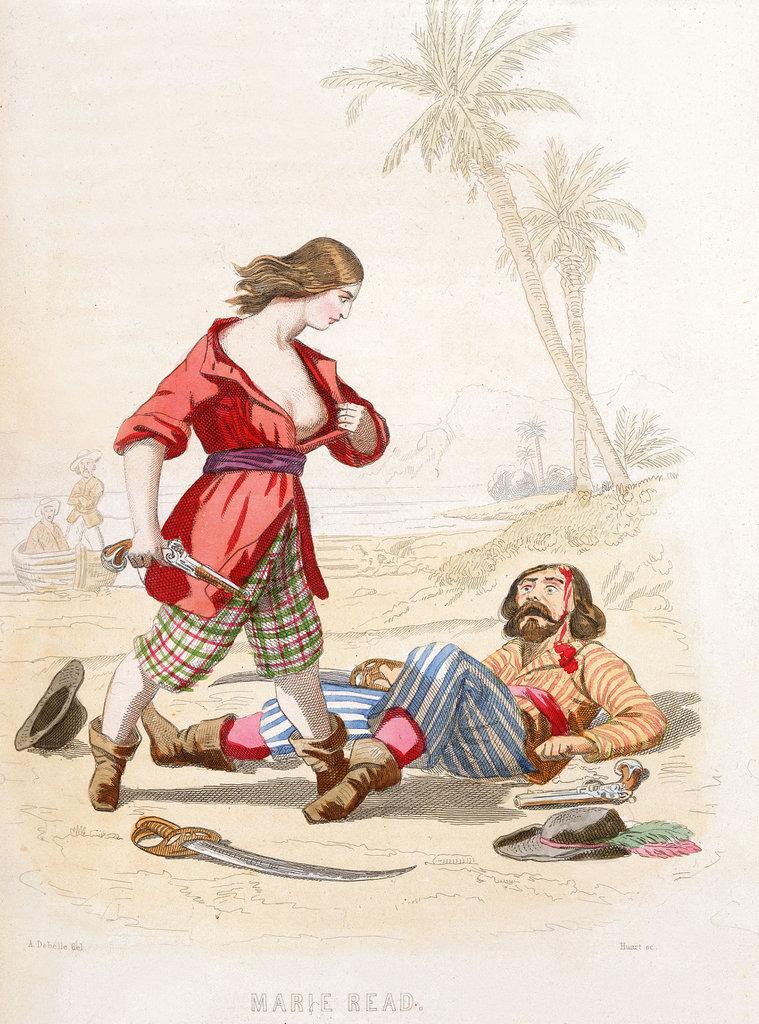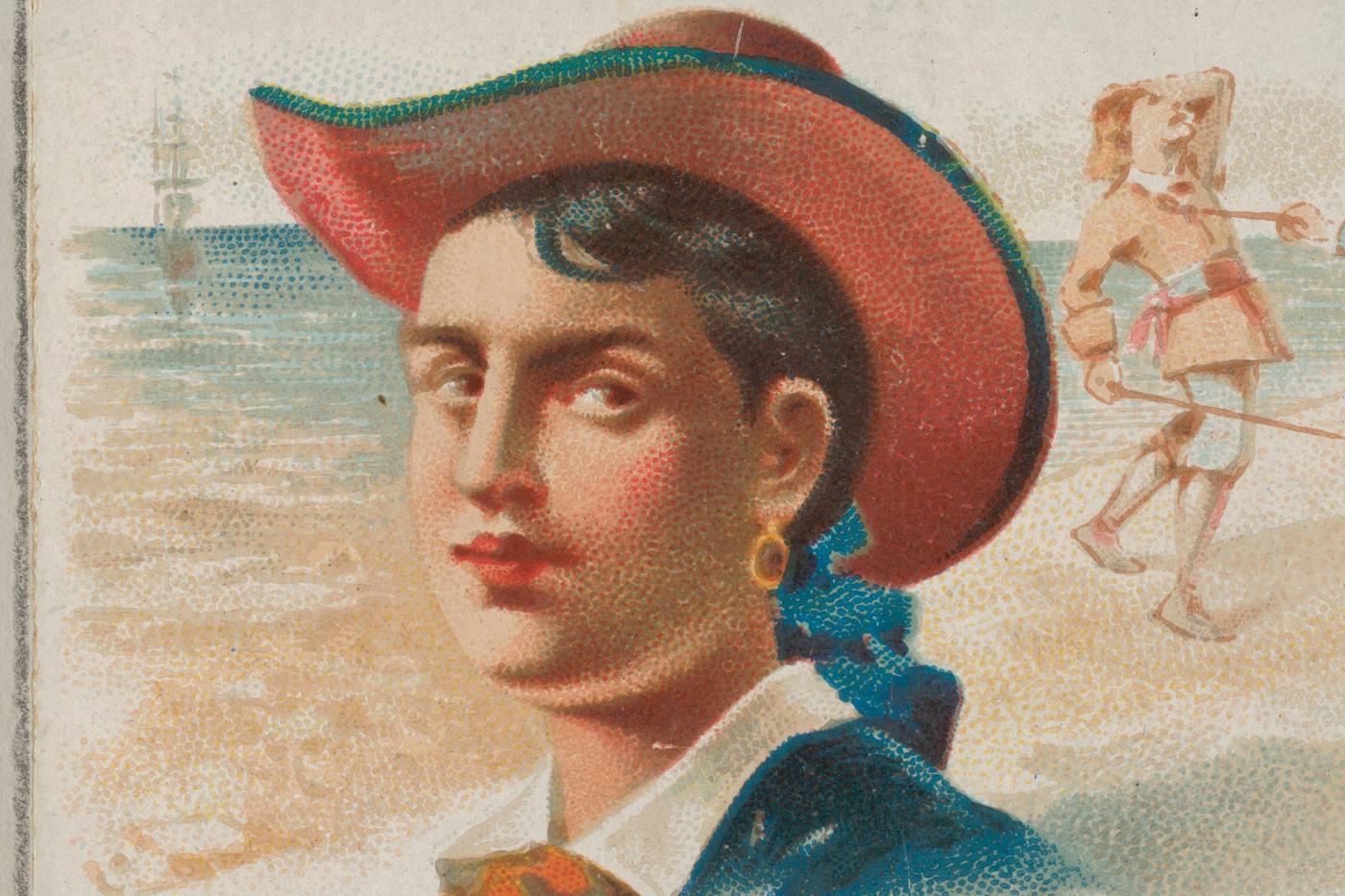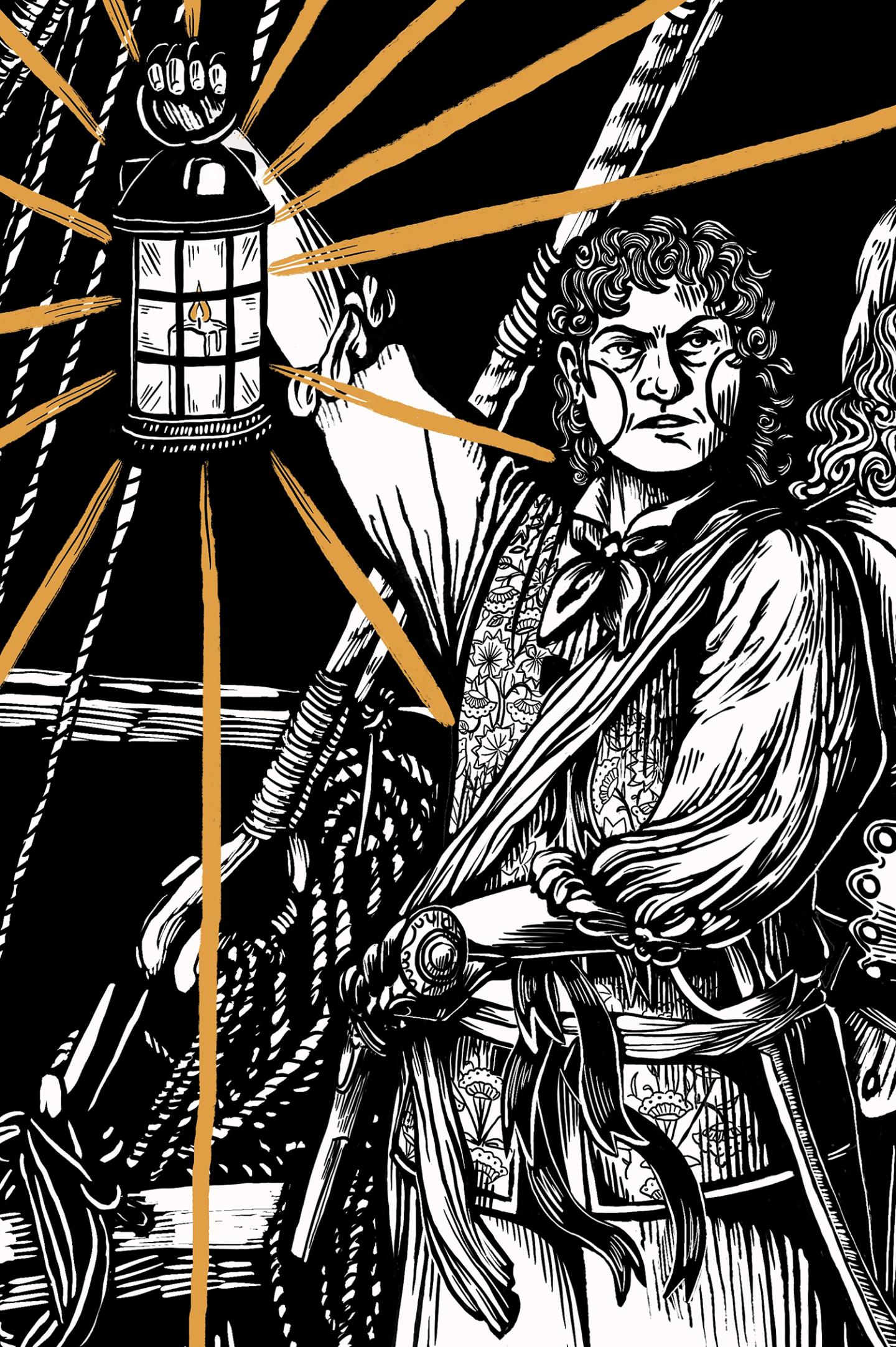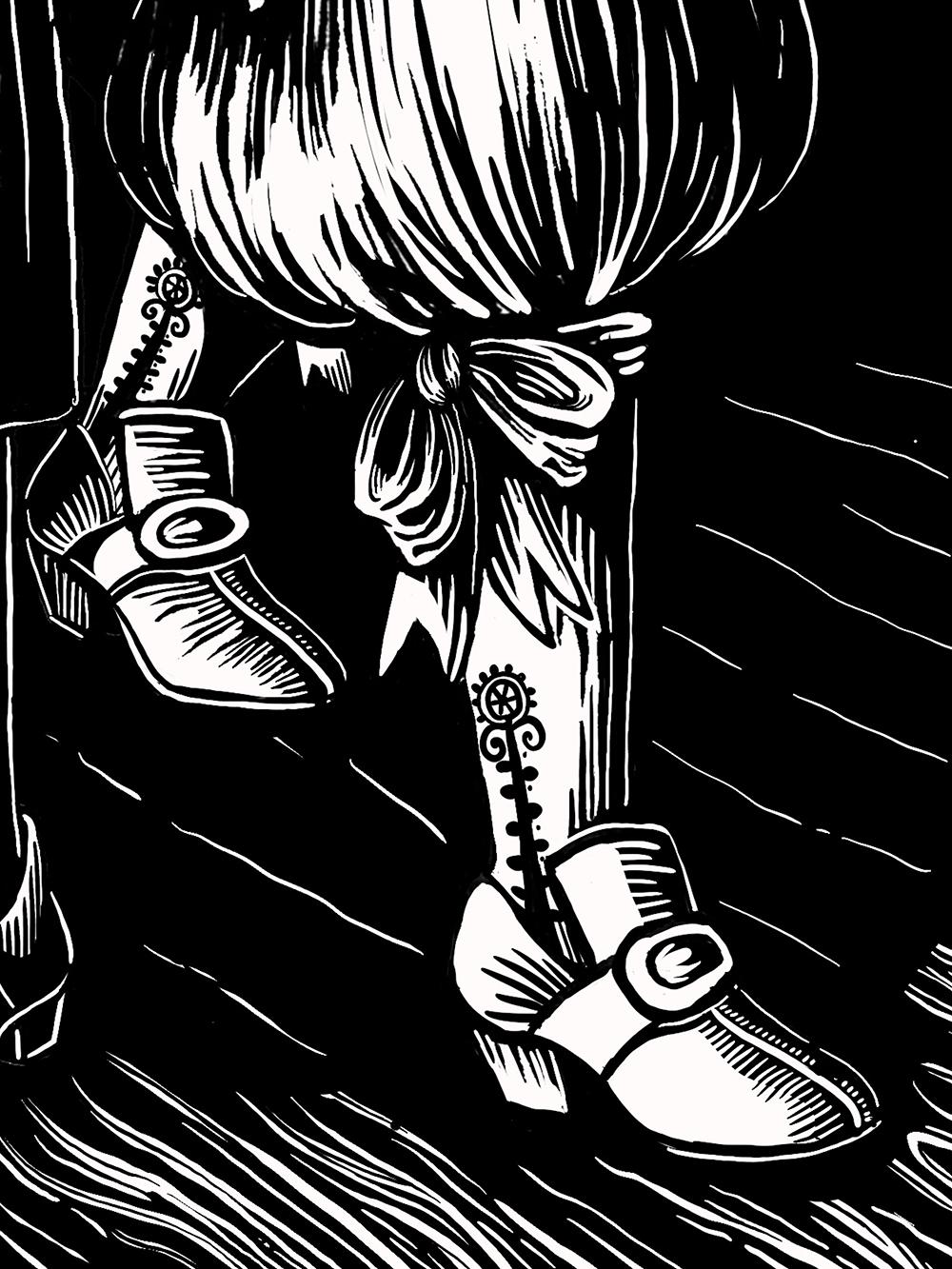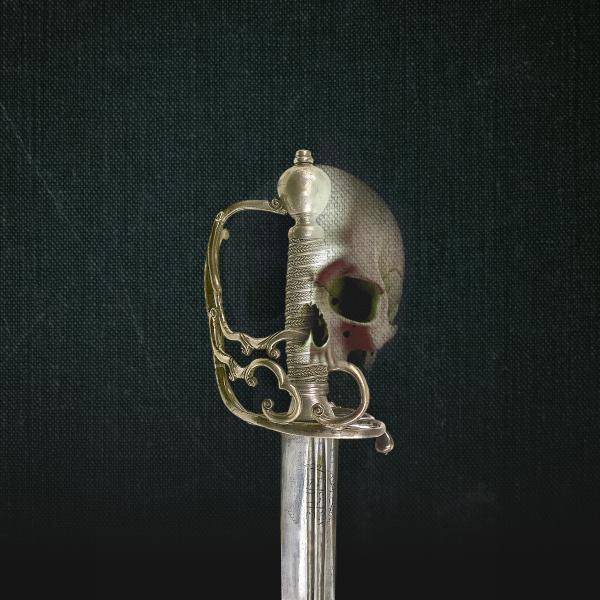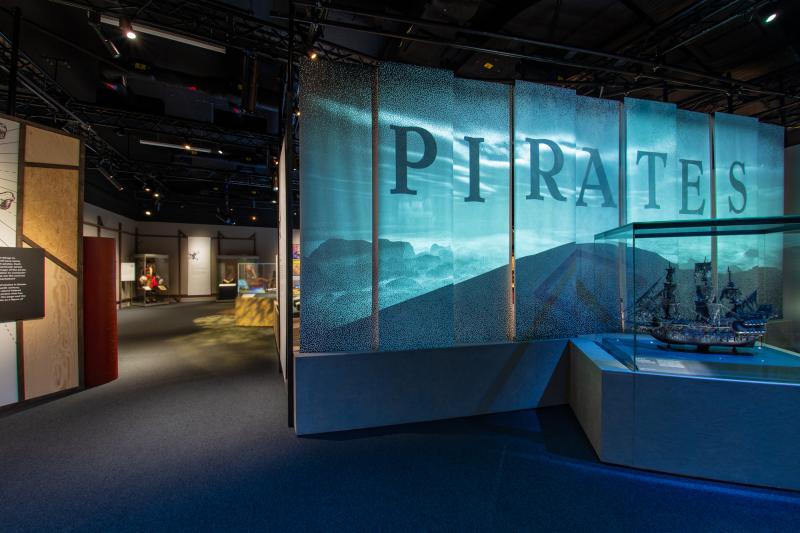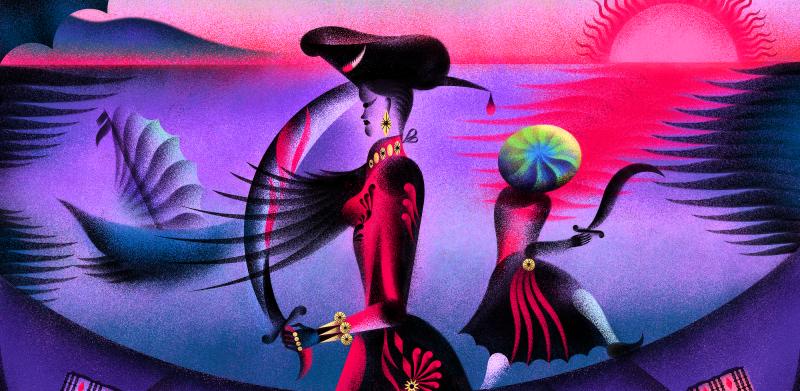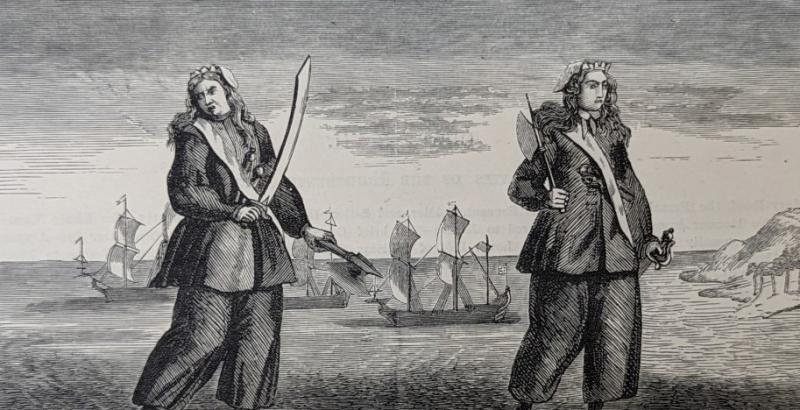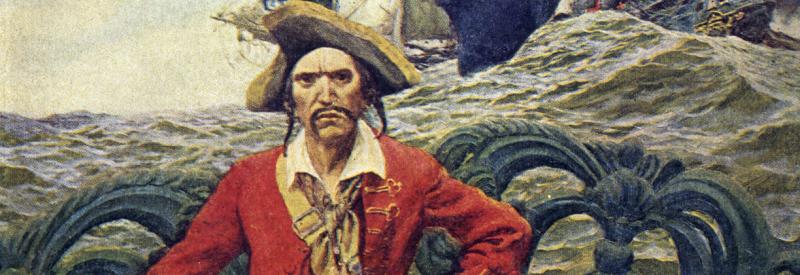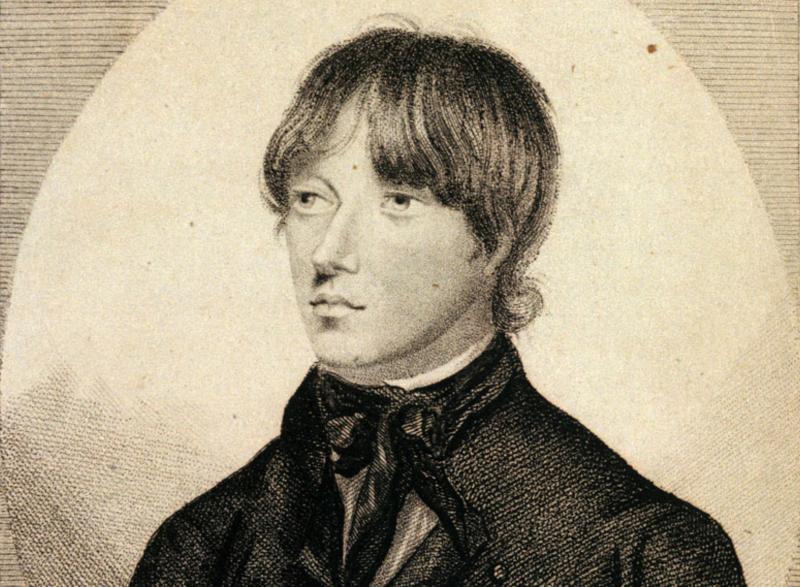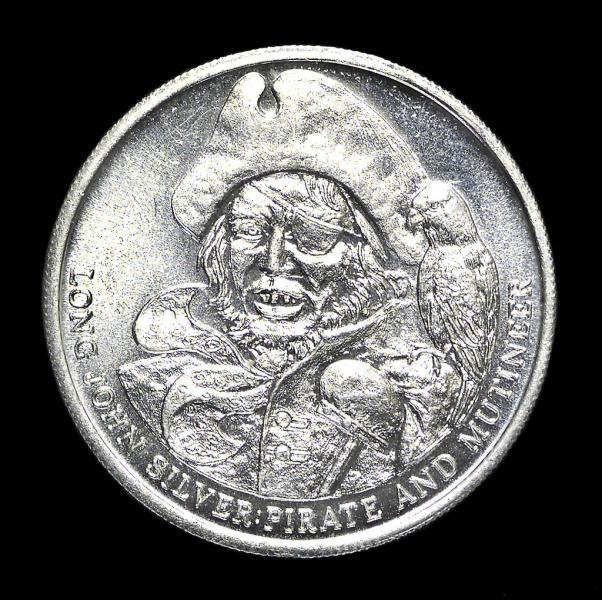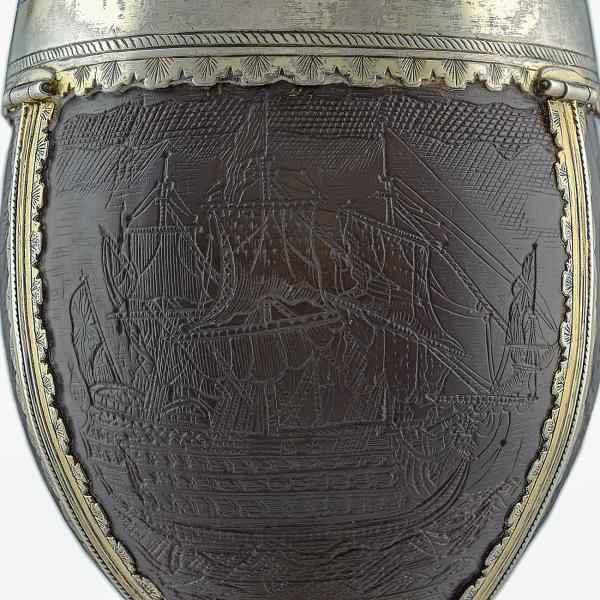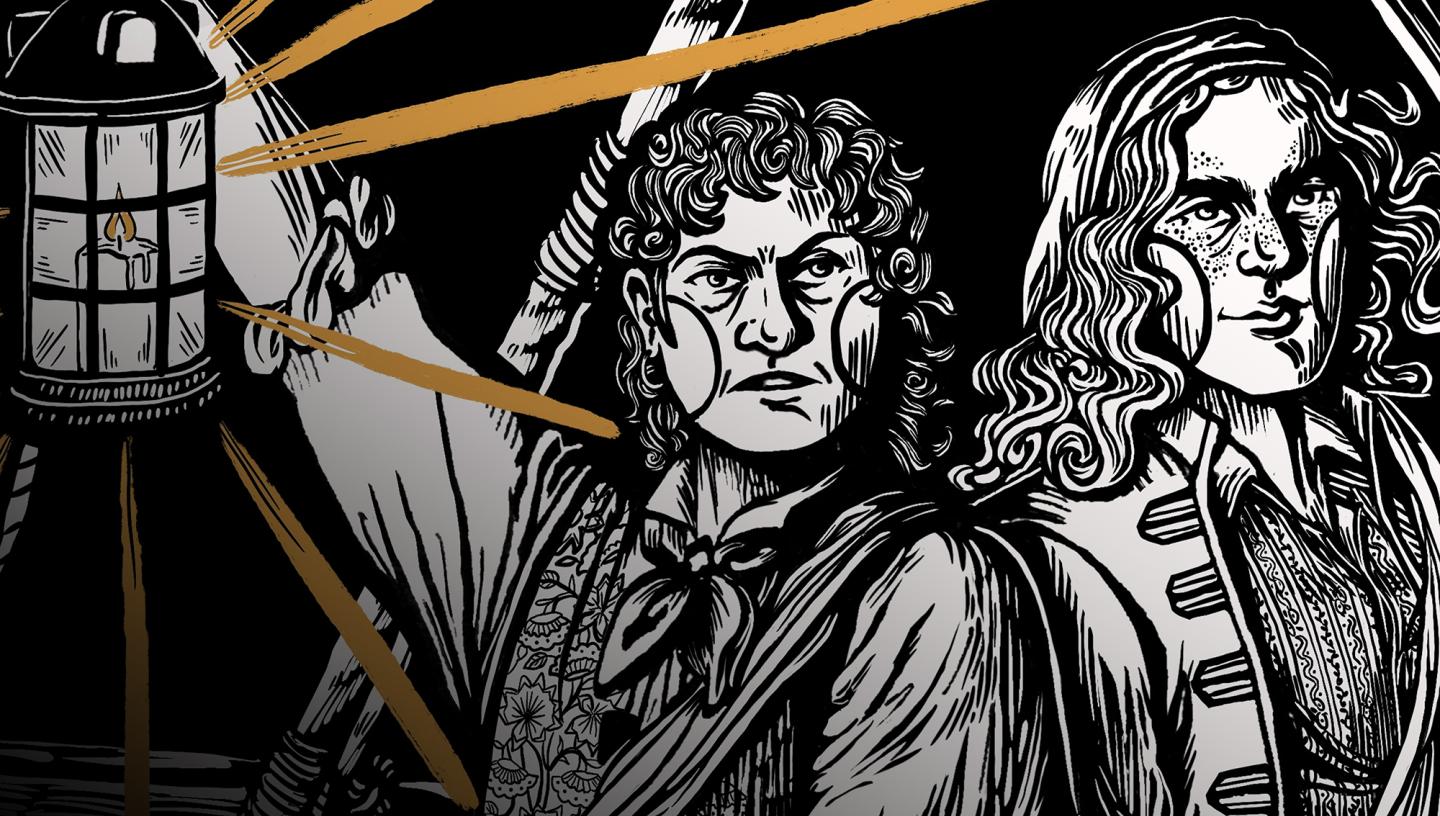
For centuries the lives of 18th century pirates Anne Bonny and Mary Read have been inextricably linked. But illustrator Linnea Maertens wanted to tease out their distinct identities.
Maertens’s woodcut-style digital artwork Piratical and Felonious depicts the duo at arms and is on display in the Pirates exhibition at the National Maritime Museum. Learn more about the making of the piece, and how Maertens found creative freedom in the gaps of history.
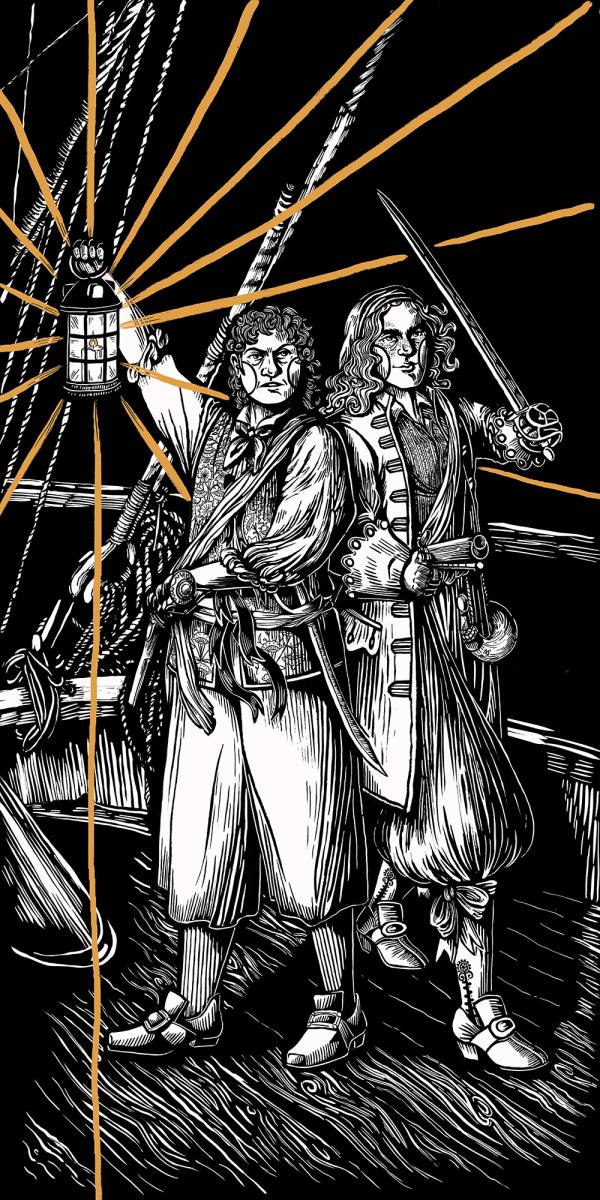
Piratical and Felonious
By Linnea Maertens
What drew you to Bonny and Read?
Bonny and Read have often been paired together; I wanted to give these two people a voice and let them speak for themselves. Initially, Bonny and Read seem like the prototype of female pirates, but when I started researching further into their stories, I realised they were these strong gender outlaws who were passionate, unique – and different from each other.
The main source we have about their lives is Captain Charles Johnson’s 1724 work A General History of the Robberies and Murders of the most notorious Pyrates, which draws on their trial records and other contemporary cultural references.
In his account of Mary Read, Johnson writes how Read was raised as a man so their mother could defraud and claim inheritance from their grandmother. Read lived most of their life as a man; I think it’s dismissive and misleading to say they were merely ‘dressing’ as a man. I wanted to bring this trans theme through in my research and in my artwork.
I was also interested in how the pair have been illustrated in the past. In the early editions of Johnson’s work Bonny and Read are depicted kind of androgynously as male sailors with bonnet caps. Over time, as Johnson’s text became more popular, the illustrations become more sexualised.
The pair are depicted bearing their breasts and showing their feminine bodies – while wearing looser, more obviously masculine clothes.
How did your artwork come together?
My artwork is a black and white digital illustration, evoking the woodcut style of famous early engravings of pirates.
I started by doing some pen and ink sketches of Bonny and Read, but quickly realised I wanted some models for my process. I’m one of the founding members of the Queer History Club at Royal Museums Greenwich, an amazing and supportive community of researchers.

Two members of the group, who are both trans / non-binary, became my Bonny and Read, and we did a photoshoot at Cutty Sark using replicas of historical costumes and props.
I had this vision of ‘the last stand’: Bonny and Read at arms, fighting back-to-back. During my research I came across a famous story (which is unlikely to be true) describing Bonny and Read under attack by an enemy ship. None of their crew mates came to help, prompting Read to fire a pistol into the hold in anger.
In my piece I wanted to highlight their power, bravery and strength – and show that it was Bonny and Read who were defending their community, not the ship’s captain.
I made a physical sketch using the photos as a reference, which I then scanned and drew over using Procreate on my iPad, adding in period dress and other details and depth. I want to thank my two lovely models Ema Sala and Jas Bevan Niss, as well as illustrator Dr Rachel Emily Taylor, who gave me very thoughtful guidance during the creative process.
Can you tell us about the details in the piece?
My background is in costume making, which has carried through into this piece and the creative process.
In my piece, I played with masculine styles of clothes, jackets and waistcoats. I gave Bonny and Read calico patterned waistcoats – a reference to the pirate Captain John ‘Calico Jack’ Rackham, who they worked alongside.
Read's waistcoat is adorned with blue ribbons, an idea inspired by an account I came across of a pirate who wore blue silk ribbons at his execution. Our modern image of pirates can be quite grungy, with clothes covered in buckles and straps. This pirate however wanted to go out in all his glory, wearing expensive and luxurious material.
There are lots of fun little details too such as Read’s ribbed socks and shoes, which are squarer and modelled off masculine shoes of the time. I’ve given Bonny delicate stockings: as period stockings weren’t stretchy, they had to have gussets around the heel, and the seam was often decorated. Bonny also has a powder horn attached to her belt, a reference to a similar item in the Pirates exhibition.
What is it about pirates that capture your imagination?
What is so lovely about pirates is that they mean different things to different people: they are figures that you can map yourself and your hopes and dreams onto.
There are all these myths and mysteries surrounding them, but sometimes it’s the stories of how their lives were organised on board ship that feel most relevant – including matelotage, a form of union that saw wealth pass to your trusted partner if you died.
The imaginative space pirates create gives you a history if you're from a group that doesn’t have a very distinct history – or one that’s hard to track down in records.
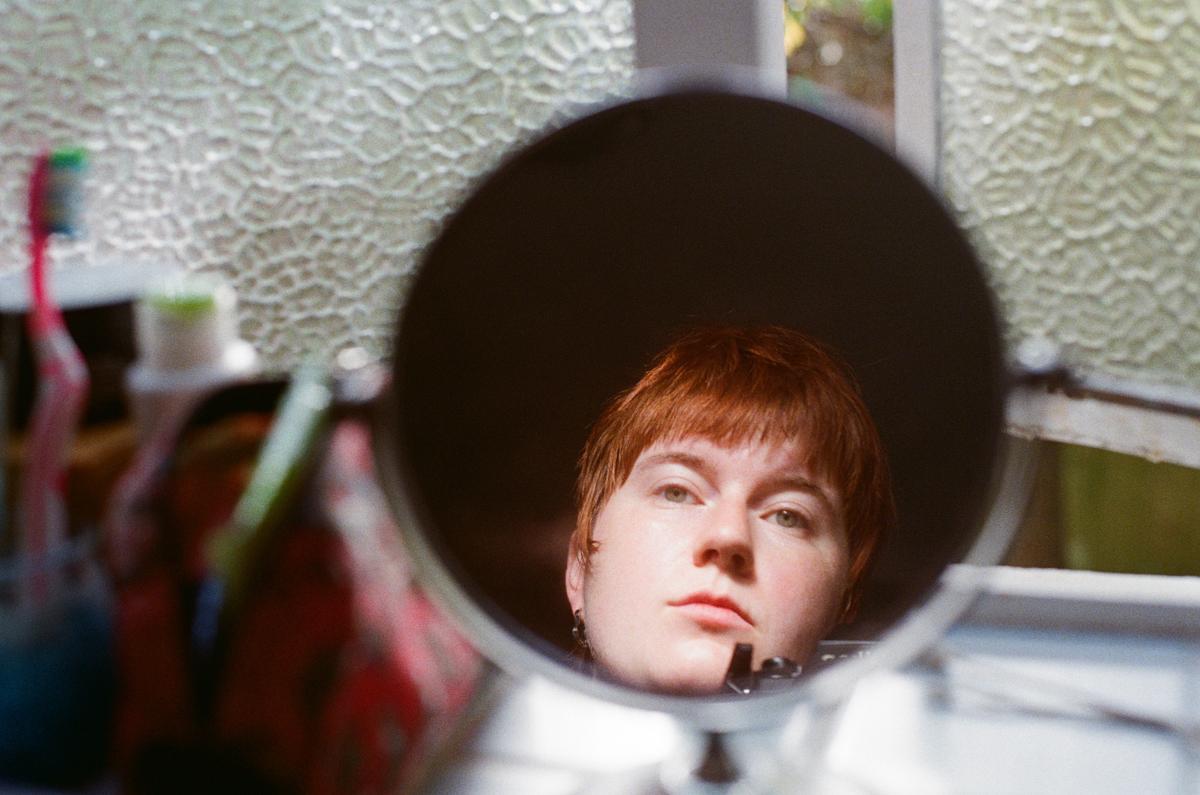
About the artist
Linnea Maertens is an illustrator and costume designer. Their work ranges from illustrations for the Thames Discovery Programme on women's histories and the River Thames to freelance costume making, working on costumes and props for the entertainment industry.
They are a founding member of Royal Museums Greenwich's Queer History Club, an informal community-centred research group that meets monthly at the National Maritime Museum.

